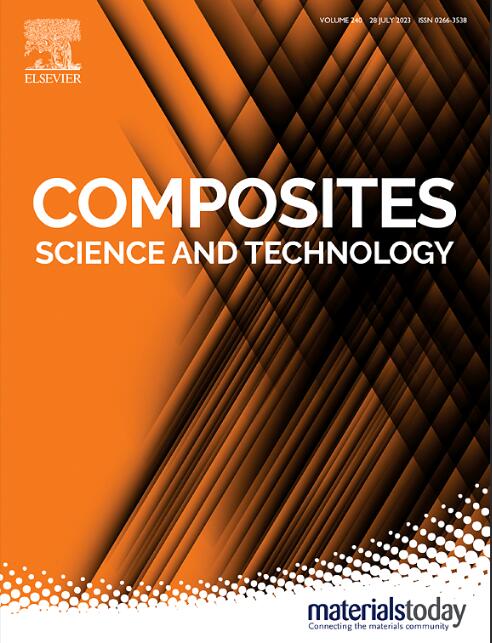Ultra-high interfacial strength of glass fiber/epoxy composites via semi-interpenetrating networks modified rigid-flexible structures
IF 8.3
1区 材料科学
Q1 MATERIALS SCIENCE, COMPOSITES
引用次数: 0
Abstract
Interface is one of the key factors to determine mechanical properties of glass fiber reinforced polymers (GFRPs), and relates to the efficient transfer and dispersion of stress from polymer to glass fibers. Fabricating rigid-flexible structures on glass fibers is a strategy to establish robust interfaces in GFRPs. However, the rigid components that consist of nanoparticles usually suffers from agglomerating during the process of GFRPs production, leading to low interfacial strength. In this work, we designed novel rigid-flexible structures on glass fibers by sizing method, and focused on preventing rigid components of rigid-flexible structures from agglomerating. Semi-interpenetrating polymer networks (semi-IPNs) as flexible components of rigid-flexible structures could anchor cellulose nanofibers as rigid components by hydrogen bonding to prevent cellulose nanofibers from agglomerating, thus strengthen the penetration of glass fiber and matrix resin. The uniformly dispersed cellulose nanofibers could deflect cracks and improve modulus to balance modulus difference between glass fibers and matrix resin. As a result, interfacial shear strength (IFSS) and transverse fiber bundle tension (TFBT) strength of GFRPs improved from 36.43 MPa to 48.60 MPa, from 34.43 MPa to 49.39 MPa, respectively. This work provides a promising strategy to strengthen the interfacial strength of GFRPs.

半互穿网络改性刚柔结构的超高界面强度玻璃纤维/环氧复合材料
界面是决定玻璃纤维增强聚合物(gfrp)力学性能的关键因素之一,它关系到应力从聚合物到玻璃纤维的有效传递和分散。在玻璃纤维上制造刚柔结构是在玻璃纤维复合材料中建立坚固界面的一种策略。然而,由纳米颗粒组成的刚性组分在gfrp生产过程中通常会发生团聚,导致界面强度低。本文采用上浆法在玻璃纤维上设计了新型刚柔结构,重点研究了刚柔结构中刚性组分的结块问题。半互穿聚合物网络(semi-IPNs)作为刚柔结构的柔性组分,可以通过氢键将纤维素纳米纤维作为刚性组分锚定,防止纤维素纳米纤维团聚,从而增强玻璃纤维和基体树脂的渗透性。均匀分散的纤维素纳米纤维可以偏转裂缝,提高模量,平衡玻璃纤维与基体树脂的模量差异。结果表明,gfrp的界面抗剪强度(IFSS)和横向纤维束抗拉强度(TFBT)分别从36.43 MPa和34.43 MPa提高到48.60 MPa和49.39 MPa。这项工作为增强gfrp的界面强度提供了一种有希望的策略。
本文章由计算机程序翻译,如有差异,请以英文原文为准。
求助全文
约1分钟内获得全文
求助全文
来源期刊

Composites Science and Technology
工程技术-材料科学:复合
CiteScore
16.20
自引率
9.90%
发文量
611
审稿时长
33 days
期刊介绍:
Composites Science and Technology publishes refereed original articles on the fundamental and applied science of engineering composites. The focus of this journal is on polymeric matrix composites with reinforcements/fillers ranging from nano- to macro-scale. CSTE encourages manuscripts reporting unique, innovative contributions to the physics, chemistry, materials science and applied mechanics aspects of advanced composites.
Besides traditional fiber reinforced composites, novel composites with significant potential for engineering applications are encouraged.
 求助内容:
求助内容: 应助结果提醒方式:
应助结果提醒方式:


